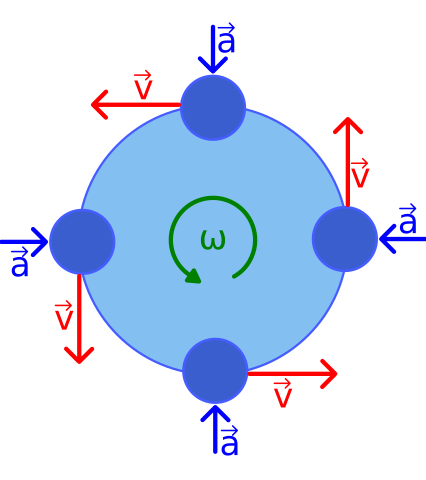I'm trying to solve the two body problem numerically, setting up G, m1 and m2 to be equal to 1. then I located each mass on positions -5 and 5 respectively along the x axis and gave them both 0 on the y axis. I'm having trouble finding the initial conditions fitting for circular movement. Please help!
Answer
For common center (barycenter) orbits, the velocities will be v1=√Gm2r2(r1+r2)2v2=√Gm1r1(r1+r2)2
You can see why with the below diagram from the Wikipedia entry on circular motion,

At any one of the four cardinal points, the velocity is purely in the tangential direction. For example, consider the top point; it is at (x,y)=(0,1) with a velocity of (vx,vy)=(−v,0). You can do the same analysis with the other 3 points. So rather than trying to determine a random (x,y) point, you can simply use the cardinal points to set the positions and velocities.
No comments:
Post a Comment